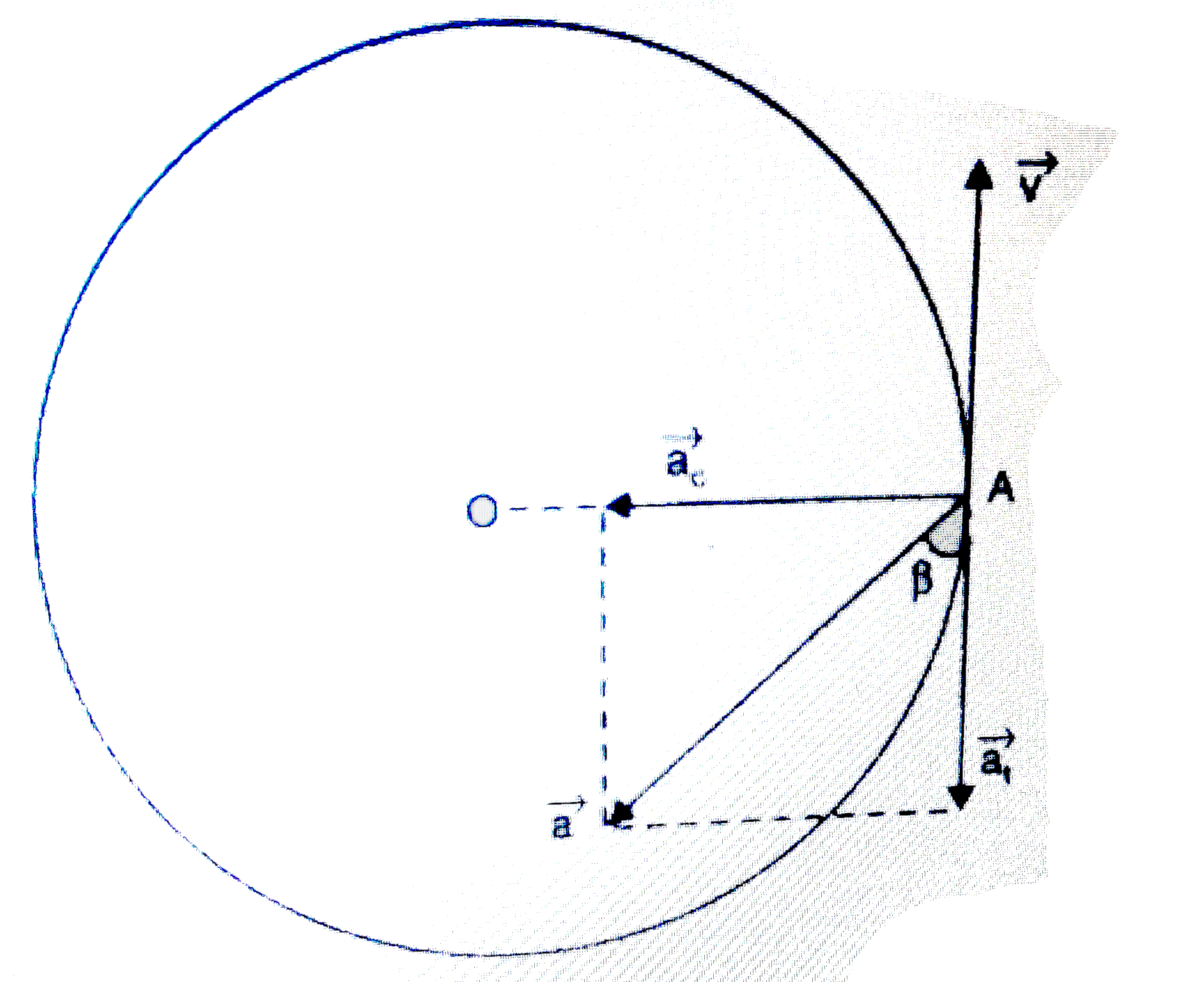A cyclist is riding with a speed of 27kmh−1. As he approaches a circular turn on the road of radius 80 m, he applies brakes and reduces his speed at the constant rate 0.5ms−1. What is the magnitude and direction of the net acceleration of the cyclist on the circular turn ?
Here v=27km/h=27×518m/s=7.5m/s,r=80m
and tangential acceleration at=−0.50m/s2.
∴ Centripetal acceleration ac=v2r=(7.5)280=0.70ms−2 (radially inwards).
Thus, as shown in fig. above, two acceleration are acting in mutually perpendicular directions. If →a be the resultant accelerations, then
|→a|=√a21+a2c=√(0.5)2+(0.7)2=0.86ms−2

and tanβ=acat=0.70.5=1.4
⇒β=tan−1(1.$=54.5∘ from the direction of negative of the velocity.
Topper's Solved these Questions
Similar Questions
A cyclist is riding with a speed of 27 kmh−1 . As he approaches a circular turn on the road of radius 80 m, he applies brakes and reduces his speed at the constant rate 0.5 ms−2. What is the magnitude and direction of the net acceleration of the cyclist on the circular turn ?
View SolutionA cylclist is riding with a speed of 27kmh−1. As he approaches a circular turn on the road of radius 80m, he applies brakes and reduces his speed at the constant rate of 0.5ms−2. What is the magnitude and direction of the net acceleration of the cyclist on the circular turn ?
View Solution
Knowledge Check
A cyclist is riding with a speed of 28.8 km/h. As he approaches a circular turn on the road of radius 80 m, he applies brakes and reduces his speed at constant tale of 0.6 ms the magniltude of the net acceleration of the cyclist is
A1ms−2B0.5ms−2C0.75ms−2D1.25ms−2If a cyclist moving with a speed of 4.9m/s on a level road can take a sharp circular turn of radius 4 m , then coefficient of friction between the cycle tyres and road is
A0.41B0.51C0.61D0.71A particle is moving on a circular path of 10 m radius. At any instant of time, its speed is 5ms−1 and the speed is increasing at a rate of 2ms−2. At this instant, the magnitude of the net acceleration will be
A3.2ms−2B2ms−2C1.2ms−2D4.3ms−2
A cyclist is riding with a speed of 18kmk−1. As he approaches a circular turn on the road of radius 25√2m, he applies brakes and reduces his speed at the constant rate of 0.5ms−1 every second. Determine the magnitude and direction of the net acceleration of the cyclist on the circular turn.
View SolutionA car is moving with a speed of 4−0km/h−1. As the car reaches a circular turn on the road of radius 100m , the driver applies brakes and reduces his speed at the rate of 1ms2. Calculate the magnitude of net acceleration of the car.
View SolutionA cyclist riding at a speed of 14√3ms−1 takes a turn around a circular road of radius 20√3m. What is the inclination to the vertical?
View SolutionA cyclist riding at a speed of 14√3ms−1 takes a turn around a circular road of radius 20√3 m . What is his inclination with horizontal ?
View SolutionA moton car is travelling at 30m/s on a circular road of radius 500m. It is increasing in speed at the rate of 2ms−2. What is its acceleration ?
View Solution
